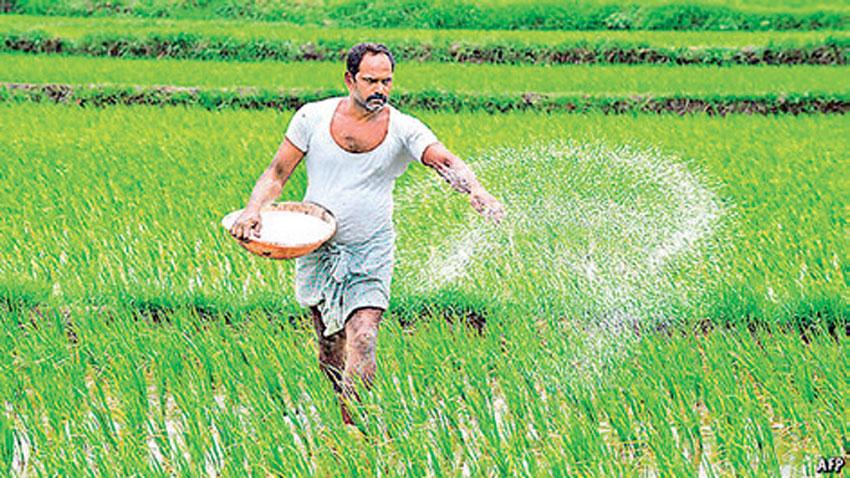
Sri Lanka’s rice output is on track to fully recover to the pre-fertiliser import ban levels next year, as the farmers regain access to imported chemical fertilisers with the approval of the International Monetary Fund (IMF) loan, according to the latest report published by the United States Department of Agriculture’s (USDA) Foreign Agricultural Service (FAS).
The USDA predicted Sri Lanka’s paddy harvest in 2023/2024 market year (October-September) to increase by 23 percent to 4.65 million metric tonnes (MMT) from the estimated 3.77 MMT in the 2022/2023 market year.
“With the approval of the IMF loan, Sri Lanka will have the means to again procure imported fertilisers for improving MY 2023/2024 production volumes and yields. With access to foreign chemical fertilisers, FAS Colombo forecasts Sri Lanka’s MY 2023/2024 paddy rice (unmilled) production at 4.65 MMT, up 23 percent from the MY 2022/2023 estimate of 3.77 MMT and on the road to recovery from the precarious MY 2021/2022 production drop to a then low of 2.57 MMT,” the USDA said.
Accordingly, rice (milled) production is projected to reach 3.16 MMT in the 2023/2024 market year, coming from a planted area of one million hectares, with yields of 4.26 metric tonnes (MT)/hectare (rough rice).
During the current market year, rice (milled) production is forecasted to reach a partial recovery, with a 47 percent increase in output, due to the incomplete or partial application of the full basket of fertilisers (that also includes muriate of potash - MOP) required for the rice crop to thrive.
“Imports of triple superphosphate (TSP) fertiliser did not arrive in sufficient quantity and time for application to the Maha 2022/2023 (September-March) season (major crop).
The TSP fertiliser that landed in Sri Lanka in March 2023, however, is now available for application during the upcoming Yala 2023 (May-August) season (minor crop),” the USDA noted.
Consequently, rice imports are projected to decline to 25,000 MT in the 2023/2024 market year, from the estimated 150,000 MT in the current market year and from a record high 820,000 MT reported in the 2021/2022 market year, amidst the massive production drop, as a direct result of the short-lived ban on chemical fertilisers.
Despite the favourable forecast, the USDA pointed out that high production costs continue to be a challenge for the rice farmers. The aggregate average paddy rice (rough) production cost per hectare has doubled to Rs.200,000 (US $ 544) in the current market year, from Rs.100,000 (US $ 508) in the previous year.
“As a result, during the Maha 2022/2023 season, many smallholder farmers, especially those in the country’s wet zone, reduced their paddy rice cultivation extent, due to the high cost of agricultural inputs, machinery and labour. Many limited their rice production efforts to cover just their own household consumption needs. Some farmers, those with better access to agricultural inputs, however, did attempt to expand rice cultivation (taking over previously barren paddy rice fields) to take advantage of higher rice prices being paid out,” it elaborated.
Meanwhile, rice consumption is predicted to rise by 7 percent year-on-year to 3.1 MMT in the 2023/2024 market year, from the estimated 2.9 MMT in the current market year. However, on a per capita consumption basis, the USDA noted that rice consumption is down about to 102kg per annum.
Rice provides the population with about 45 percent of its total calories and 40 percent of the total protein requirements, although rice consumption has been steadily declining over the past decades, due to a drop in household member numbers, changing lifestyle and shifting consumption patterns.
Amidst the economic crisis, Sri Lankans cut down meals consisted of rice, vegetables, oil, sugar and animal protein.






